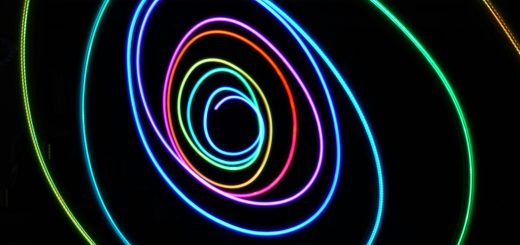Energy Flow Mastery: The Basics of Reiki Healing Practice

Hey there, amazing readers! 🖐️ Just a quick note: yes, we know there are a lot of ads here. Trust us, we get it—it’s not the prettiest look, but they help us keep this blog alive and kicking. Those pesky little ads cover the costs of all the behind-the-scenes magic, from hosting and tech stuff to creating content we hope you’ll love.
We’re committed to delivering quality posts, and your support (even just sticking around despite the ads) means everything to us. So, bear with us, and thanks for helping us keep the good vibes rolling. Now, on to the fun stuff! 😉
TRANSLATE BUTTON AT THE END OF THE ARTICLE
Introduction: What is Reiki Healing Practice?
Reiki healing practice is a holistic healing technique that originated in Japan and is based on the concept of energy flow.
It involves the practitioner placing their hands lightly on or just above the client’s body to facilitate the flow of universal life energy.
Reiki practitioners believe that this energy, also known as ki or chi, is present in all living things and can be channeled to promote healing and balance.
This article will delve into the basics of Reiki healing practice, its history and origins, the concept of energy flow, the role of the practitioner, the different levels of attunement, hand positions and techniques, the benefits and potential uses of Reiki, the science behind it, and its integration with traditional medicine.
The History and Origins of Reiki
Reiki was developed in the early 20th century by a Japanese Buddhist monk named Mikao Usui.
Usui sought a method of healing that could be accessible to everyone, regardless of their religious or spiritual beliefs.
According to the Reiki tradition, Usui received the knowledge and ability to practice Reiki during a spiritual awakening on Mount Kurama.
He subsequently established a system of teaching and attunements to pass on this healing technique to others.
Reiki spread throughout Japan and eventually to the Western world, where it gained popularity as an alternative therapy.
Understanding the Concept of Energy Flow
The foundation of Reiki healing practice is the concept of energy flow.
Reiki practitioners believe that energy flows through the body in a network of pathways called meridians or nadis.
When this energy becomes blocked or stagnant, it can lead to physical, emotional, or spiritual imbalances and illness.
Reiki aims to restore the harmonious flow of energy by clearing these blockages and allowing the body’s natural healing mechanisms to take effect.
The energy used in Reiki healing is not the practitioner’s own energy but rather a universal life force energy that is channeled through them.
The Five Principles of Reiki Healing
The practice of Reiki is guided by five principles, which are often referred to as the Reiki precepts or the Reiki principles.
These principles serve as a moral and spiritual compass for Reiki practitioners and are meant to promote a mindset of compassion, gratitude, and self-improvement.
The five principles are:
Just for today, I will not be angry.
Just for today, I will not worry.
Just for today, I will be grateful.
Just for today, I will do my work honestly.
Just for today, I will be kind to every living thing.
By embodying these principles, Reiki practitioners strive to cultivate inner peace and harmony, which in turn enhances their ability to facilitate healing in others.
The Role of the Reiki Practitioner
The role of the Reiki practitioner is to act as a channel for the universal life energy and facilitate its flow to the client.
The practitioner does not actively direct the energy but rather allows it to flow where it is needed most.
The practitioner’s hands are placed lightly on or above specific areas of the client’s body, known as hand positions, to help unblock energy and promote healing.
The practitioner’s intention, focus, and presence are crucial in creating a safe and supportive environment for the client’s healing process.
The Different Levels of Reiki Attunement
Reiki attunements are a crucial aspect of becoming a Reiki practitioner.
Attunements are energetic ceremonies performed by a Reiki Master to open the practitioner’s energy channels and enhance their ability to channel Reiki energy.
There are typically three levels or degrees of Reiki attunement:
Reiki Level 1 (or Reiki First Degree): This is the basic level where practitioners learn the foundational principles and hand positions of Reiki.
They gain the ability to practice self-healing and provide Reiki to others.
Reiki Level 2 (or Reiki Second Degree): At this level, practitioners deepen their understanding of Reiki and learn to use symbols and mantras to enhance the energy flow.
They also gain the ability to provide distance healing.
Reiki Level 3 (or Reiki Master/Teacher): This level is for those who wish to become Reiki Masters and teach Reiki to others.
It involves further attunements and a deepening of the practitioner’s connection to the Reiki energy.
Initiating Energy Flow: Hand Positions and Techniques
Reiki practitioners use specific hand positions to initiate and facilitate the flow of energy during a session.
These hand positions correspond to the body’s major energy centers, known as chakras, as well as other areas that may require attention.
The practitioner’s hands are usually placed gently on or just above the body, allowing the Reiki energy to flow through them.
Some common hand positions include placing the hands on the head, shoulders, chest, abdomen, and back.
The practitioner may also use intuitive techniques to identify areas of energy imbalance and adapt their hand positions accordingly.
Channeling Universal Life Energy in Reiki
Reiki healing involves channeling universal life energy through the practitioner’s hands to the client.
This energy is believed to be intelligent and flow to where it is most needed for healing.
The practitioner acts as a conduit, allowing the energy to pass through them without depleting their own personal energy reserves.
The Reiki energy is not limited by time, space, or distance, which allows for distance healing to be effective.
The client’s body and energy system naturally draw in the Reiki energy and utilize it for healing on physical, emotional, mental, and spiritual levels.
Benefits and Potential Uses of Reiki Healing
Reiki healing practice offers a wide range of potential benefits and uses.
Some of the common benefits reported by clients include:
Relaxation and stress reduction: Reiki can induce deep relaxation and help alleviate symptoms of stress, anxiety, and depression.
Pain relief: Reiki has been reported to reduce pain, both acute and chronic, by promoting the body’s natural healing response.
Emotional healing: Reiki can assist in releasing emotional blockages, promoting emotional well-being, and supporting healing from past traumas.
Physical healing: Reiki can be used to support and enhance the body’s natural healing processes, making it a complementary therapy for various conditions.
Spiritual growth and self-awareness: Reiki can deepen one’s connection to their spirituality and aid in personal growth and self-discovery.
Reiki can be used in conjunction with conventional medical treatments and is not meant to replace them.
It can be applied to oneself, others, animals, plants, and even objects.
Exploring the Science Behind Reiki
While the scientific understanding of Reiki is still evolving, several studies have explored its effects and potential mechanisms.
The concept of energy flow in Reiki aligns with the principles of biofield therapy, which suggests that the human body has an energy field that can be influenced for healing.
Some studies have shown that Reiki can induce a relaxation response, lower heart rate and blood pressure, and increase the body’s production of endorphins and other beneficial neurotransmitters.
These effects contribute to the overall sense of well-being and may have therapeutic value.
Integrating Reiki with Traditional Medicine
Reiki is considered a complementary therapy and can be integrated with traditional medical treatments.
Many healthcare professionals recognize the potential benefits of Reiki and are incorporating it into their practices.
Reiki can be used alongside conventional medical treatments to provide additional support and promote overall well-being.
It is important for individuals considering Reiki as part of their healing journey to discuss it with their healthcare providers and ensure a collaborative approach.
Conclusion: Embracing the Power of Reiki Energy
Reiki healing practice is a powerful and versatile healing modality that offers numerous benefits for physical, emotional, and spiritual well-being.
Its origins in Japan, the concept of energy flow, the role of the practitioner, and the different levels of attunement all contribute to the effectiveness of Reiki.
By embracing the principles of Reiki and cultivating a strong connection to universal life energy, practitioners can provide healing and support to themselves and others.
The integration of Reiki with traditional medicine highlights its potential as a complementary therapy that can enhance overall wellness.
Embracing the power of Reiki energy allows individuals to tap into their innate abilities for healing and experience a profound sense of balance and harmony.

The Enlightenment Journey is a remarkable collection of writings authored by a distinguished group of experts in the fields of spirituality, new age, and esoteric knowledge.
This anthology features a diverse assembly of well-experienced authors who bring their profound insights and credible perspectives to the forefront.
Each contributor possesses a wealth of knowledge and wisdom, making them authorities in their respective domains.
Together, they offer readers a transformative journey into the realms of spiritual growth, self-discovery, and esoteric enlightenment.
The Enlightenment Journey is a testament to the collective expertise of these luminaries, providing readers with a rich tapestry of ideas and information to illuminate their spiritual path.
Our Diverse Expertise 🌟
While our primary focus is on spirituality and esotericism, we are equally passionate about exploring a wide range of other topics and niches 🌍📚. Our experienced team is dedicated to delivering high-quality, informative content across various subjects ✨.
To ensure we provide the most accurate and valuable insights, we collaborate with trusted experts in their respective domains 🧑🏫👩🏫. This allows us to offer well-rounded perspectives and knowledge to our readers.
Our blog originally focused on spirituality and metaphysics, but we’ve since expanded to cover a wide range of niches. Don’t worry—we continue to publish a lot of articles on spirituality! Frequently visit our blog to explore our diverse content and stay tuned for more insightful reads.





